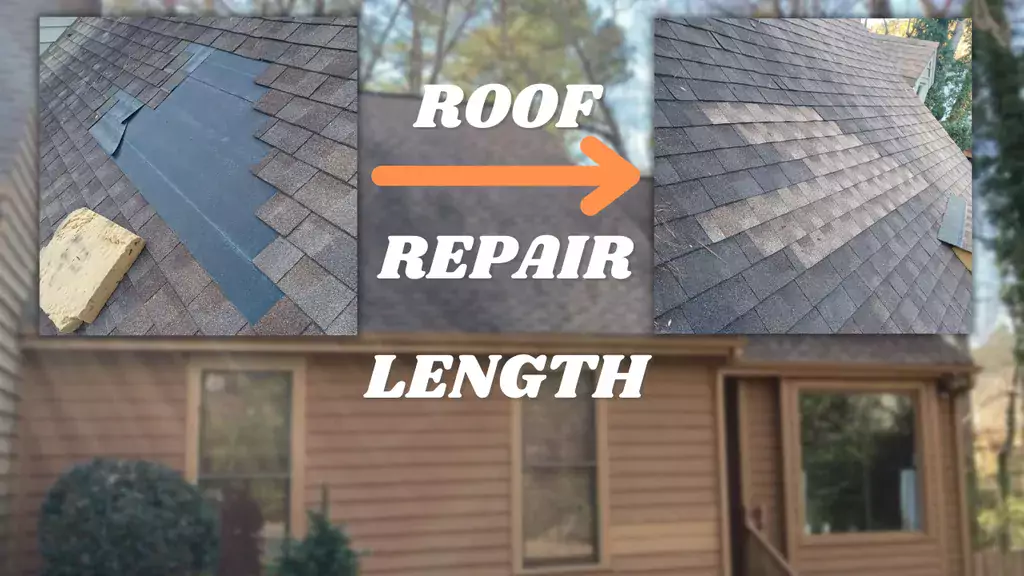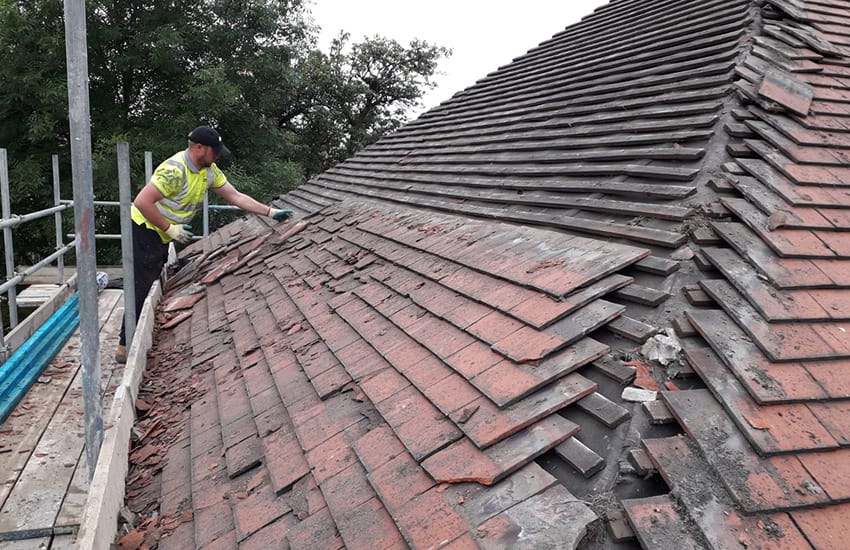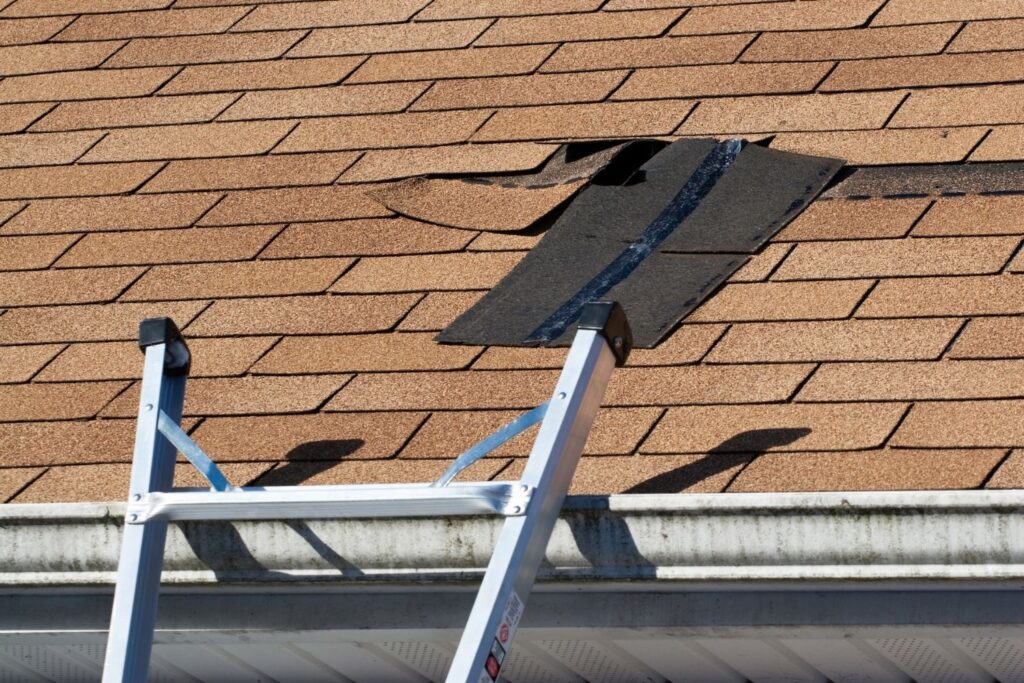Have you ever wondered how long it takes to repair a roof patch? Whether you’re dealing with a minor leak or a more significant issue, getting your roof repaired promptly is crucial to avoid further damage. In this article, we will explore the factors that influence the time it takes to patch a roof and provide some insights on what to expect during the repair process. So, let’s dive right in and find out how long a roof patch might take to ensure your peace of mind and a fully functional roof in no time!
Preparation
Assessing the damage
Before you start patching your roof, it is important to first assess the extent of the damage. Take the time to carefully inspect the area that needs repair and determine the size and complexity of the damage. This will help you determine the materials and tools you will need for the job.
Gathering materials and tools
Once you have assessed the damage, gather all the materials and tools you will need for the patching job. This may include roofing sealant, roofing tape, tarp, replacement shingles or tiles, roofing cement, and any other necessary items. Having everything you need prepared beforehand will help streamline the process and ensure you have everything at hand when you begin.
Clearing the work area
Before you start working on your roof, it is important to clear the work area of any debris or obstacles. This will not only ensure your safety while working but also make it easier for you to access the damaged area. Remove any loose shingles or tiles, sweep away any leaves or dirt, and clear the area of any other debris that may hinder your repair efforts.
Choosing the Right Time
Considering weather conditions
When planning to patch your roof, it is important to consider the weather conditions. Avoid undertaking this task during periods of heavy rain, snow, or strong winds, as these conditions can make the job more challenging and potentially dangerous. Ideally, choose a clear and dry day to ensure optimal conditions for your roof patching.
Avoiding peak roofing season
Another factor to keep in mind when choosing the right time to patch your roof is to avoid peak roofing season. During this time, professional roofers are in high demand, and it may be difficult to find someone to do the job or get the necessary materials. Additionally, the cost of materials may be higher during peak season. By scheduling your roof patching during the off-peak season, you can potentially save time and money.

Types of Roof Patches
Temporary patches
Temporary patches are quick fixes that are meant to provide immediate relief until a more permanent solution can be implemented. These patches are typically used to stop leaks or prevent further damage until more extensive repairs can be scheduled. Temporary patches often involve using roof sealant, roofing tape, or covering the damaged area with a tarp.
Semi-permanent patches
Semi-permanent patches involve more substantial repairs that can provide a longer-lasting solution. This type of patching may involve replacing damaged shingles or tiles, installing a patch over the damaged area, or applying roofing cement. Semi-permanent patches are more durable and can typically withstand the elements for a longer period of time.
Permanent patches
In some cases, the damage to the roof may be severe enough to warrant a permanent patch or even a complete roof replacement. Permanent patches involve removing the damaged section of the roof and installing new materials in its place. While this may be a more time-consuming and expensive solution, it ensures long-term durability and protection for your home.
Factors Affecting Patching Time
Size and complexity of the damage
The size and complexity of the damage will greatly impact the time required to complete a roof patch. Smaller, less complicated patches may only take a fraction of the time compared to larger and more intricate repairs. Assessing the damage beforehand will give you a better understanding of the time commitment involved.
Type of roofing material
The type of roofing material you have will also influence the patching time. Some materials, such as asphalt shingles, are relatively easy to work with and can be patched quickly. However, other materials like clay tiles or slate may require more time and specialized skills to repair. Familiarize yourself with the specific requirements of your roofing material to better estimate the patching time.
Experience and skills of the roofer
Your own experience and skills, or those of the roofer you hire, will also impact the patching time. Experienced roofers will likely be more efficient in their work and able to complete the job in less time. If you are a novice at roof repairs, it may take you longer to complete the patching process. Consider your own proficiency or the expertise of the roofing professional you choose when estimating the time required.

Temporary Patching Techniques
Applying roof sealant
One common temporary patching technique is applying roof sealant. Roof sealant is a flexible material that can be used to seal cracks, gaps, or other areas where leaks are occurring. Simply apply the sealant to the damaged area, ensuring complete coverage, and allow it to dry. This method is quick and easy, providing immediate relief from leaks.
Using roofing tape
Roofing tape is another effective option for temporary patching. It is a self-adhesive tape that can be used to cover and seal damaged areas on the roof. Simply cut the tape to the desired length, apply it over the damaged area, and press it firmly to ensure proper adhesion. Roofing tape provides a temporary barrier against leaks and can withstand various weather conditions.
Covering the damaged area with a tarp
If the damage to your roof is extensive, covering the affected area with a tarp can be a temporary solution. Secure the tarp tightly over the damaged section, making sure it is securely fastened to prevent water intrusion. While this method is not a long-term fix, it can provide temporary protection until a more permanent solution can be implemented.
Semi-Permanent Patching Methods
Replacing damaged shingles/tiles
If you have individual damaged shingles or tiles, one semi-permanent patching method is to replace them. Carefully remove the damaged shingle or tile, ensuring not to cause further damage to surrounding materials. Then, install a new shingle or tile in its place, following proper installation techniques. This method provides a more durable and aesthetically pleasing repair.
Installing a patch over the damaged area
For larger damaged areas, installing a patch over the affected section can provide a semi-permanent solution. Cut a piece of roofing material, such as shingles or tiles, to fit over the damaged area. Ensure the patch is properly aligned with the surrounding roofing materials and securely fastened. This method can effectively cover larger areas of damage and extend the lifespan of your roof.
Applying roofing cement
Roofing cement, also known as mastic or flashing cement, can be used to create a semi-permanent patch. Apply the cement directly to the damaged area, ensuring it is evenly distributed and covers the entire affected section. Roofing cement forms a strong bond, providing a long-lasting repair that can withstand various weather conditions.

Permanent Patching Solutions
Removing the damaged section and installing new materials
In some cases, the damage may be extensive enough to require the removal of the damaged section of the roof and the installation of new materials. This is a permanent patching solution that ensures the structural integrity and longevity of your roof. Removing the damaged materials and replacing them with new ones should be done carefully and accurately to maintain the integrity of the roof’s structure.
Replacing the entire roof
For roofs with widespread damage or that have reached the end of their lifespan, replacing the entire roof may be the most viable permanent patching solution. While this is a more costly and time-consuming option, it provides a fresh start and ensures maximum protection for your home. Consulting with a professional roofer will help determine if a complete roof replacement is necessary for your situation.
Estimated Time for Temporary Patches
Small patch: 30 minutes to 1 hour
Small temporary patches using roof sealant, roofing tape, or tarp can generally be completed within 30 minutes to 1 hour. These quick fixes are designed to provide immediate relief and prevent further damage until a more permanent solution can be implemented.
Medium patch: 1 to 2 hours
For medium-sized patches, such as replacing a few damaged shingles or tiles, the estimated time can range from 1 to 2 hours. This includes the time to remove the damaged materials and properly install the new ones, ensuring a secure and durable repair.
Large patch: 2 to 4 hours
Large temporary patches that involve more extensive repairs or covering a significant area with a tarp can take anywhere from 2 to 4 hours to complete. These patches require more time and effort to properly seal the damaged section and provide temporary protection against leaks.

Estimated Time for Semi-Permanent Patches
Small patch: 2 to 4 hours
Semi-permanent patches involving small areas, such as replacing a few damaged shingles or tiles, can generally be completed in 2 to 4 hours. This includes the time to remove the damaged materials, install the replacement ones, and ensure proper adhesion or alignment.
Medium patch: 4 to 6 hours
For medium-sized semi-permanent patches, such as installing a patch over a larger damaged area, the estimated time can range from 4 to 6 hours. This includes the time to cut and align the patch materials, secure them in place, and ensure a durable and water-tight repair.
Large patch: 6 to 8 hours
Larger semi-permanent patches, such as applying roofing cement over a significant area, can take approximately 6 to 8 hours to complete. This method requires careful application of the cement, ensuring thorough coverage and a strong bond for long-lasting protection.
Conclusion
Factors to consider when estimating patching time
When estimating the time required for roof patching, several factors need to be considered. The size and complexity of the damage, the type of roofing material, and the experience and skills of the person performing the repair all play a role in determining the timeline. It is essential to assess the damage thoroughly, gather the necessary materials, and choose an appropriate time to ensure a successful and efficient patching process.
Importance of prompt roof repair
Prompt roof repair is crucial to maintain the structural integrity and longevity of your roof. Even small leaks or minor damage can lead to more significant problems if left unaddressed. Water intrusion can result in mold growth, rotting of wooden structures, and interior damage to your home. By promptly addressing roof issues and implementing timely patches, you can prevent further damage and ensure the protection of your property.
By following the proper preparation steps, choosing the right time for repair, understanding the different patching methods, and estimating the required time, you can tackle roof patches effectively and efficiently. Whether you opt for temporary, semi-permanent, or permanent solutions, make sure to prioritize the prompt repair of your roof to maintain the safety and integrity of your home.
